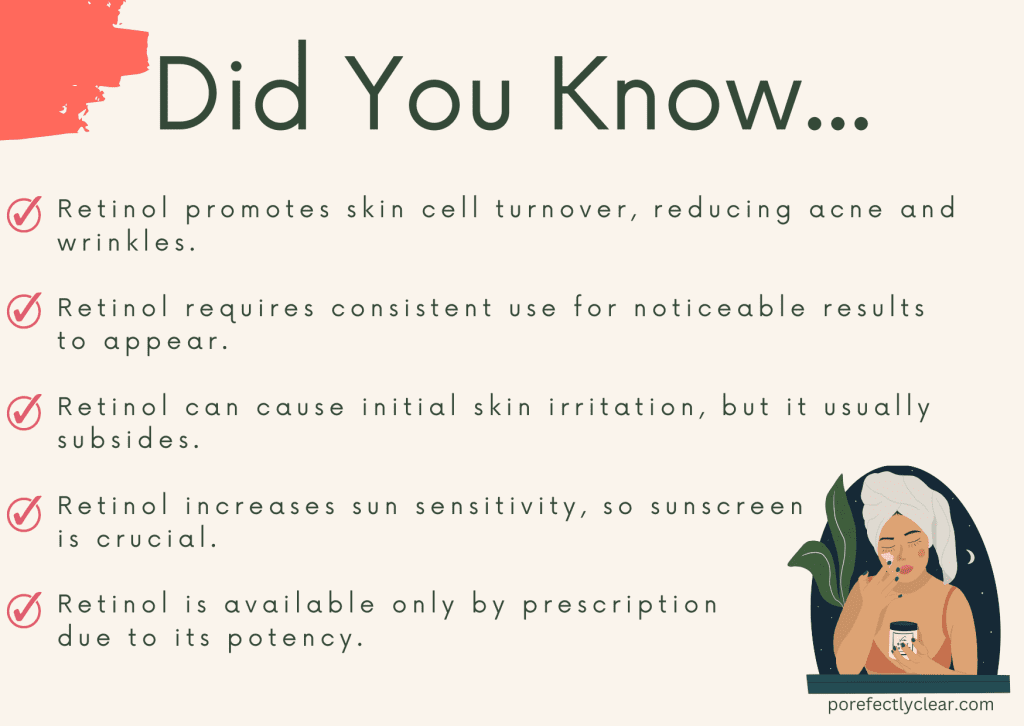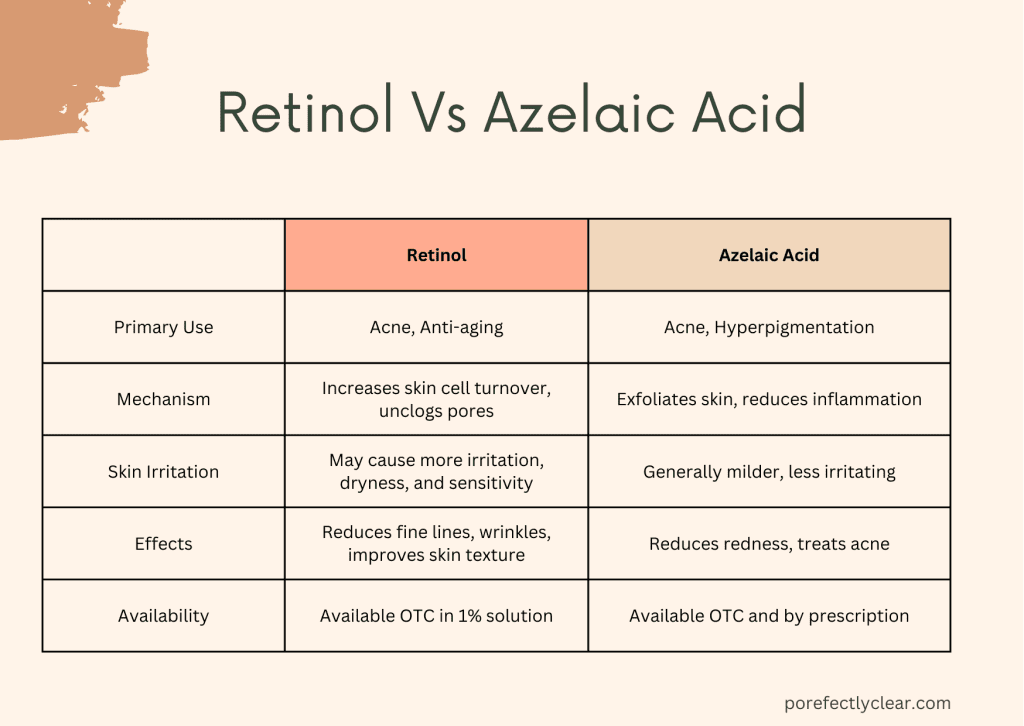If you are someone who struggles with acne, dark spots, or uneven skin texture, you have probably heard of azelaic acid and retinol. These two skincare ingredients are often recommended by dermatologists to improve skin texture and reduce acne. But can you use azelaic acid with tretinoin?
Many people who struggle with acne and uneven skin texture are looking for effective solutions. Azelaic acid and tretinoin are two ingredients that have been proven to be effective in treating these issues.
However, there is some confusion about whether these two ingredients can be used together. It is essential to understand the potential benefits and risks of using azelaic acid and tretinoin together to make an informed decision about your skincare routine.
This article provides a comprehensive guide to using azelaic acid and tretinoin together. We will explore the benefits and potential risks of combining these two ingredients, as well as provide tips for how to use them safely and effectively.
Understanding Azelaic Acid and Retinol
Azelaic acid is a naturally occurring acid found in grains like wheat, rye, and barley. It is used in skincare products to treat acne, reduce inflammation, and brighten the skin. Retinol, on the other hand, is a retinoid, a derivative of vitamin A. It is a popular ingredient in anti-aging skincare products, and it is also used to treat acne and improve skin texture.
What is Azelaic Acid?
Azelaic acid is a dicarboxylic acid that is naturally found in grains like wheat, rye, and barley. It is used in skincare products to treat acne, reduce inflammation, and brighten the skin. Azelaic acid is also effective in reducing hyperpigmentation and improving skin texture.
Benefits of Azelaic Acid
Azelaic acid has several benefits for the skin. It is effective in reducing the appearance of acne and preventing future breakouts. It also has anti-inflammatory properties, which can help reduce redness and irritation in the skin. Azelaic acid is also effective in reducing hyperpigmentation and improving skin texture.
How Does Azelaic Acid Work?
Azelaic acid works by reducing the production of keratin, a protein that can block pores and lead to acne. It also has antibacterial properties, which can help to kill the bacteria that cause acne. Azelaic acid also helps to reduce the production of melanin, the pigment that gives skin its color. This can help to reduce the appearance of dark spots and hyperpigmentation.

What is Retinol?
Retinol is a derivative of vitamin A and belongs to the class of compounds known as retinoids. It is a popular ingredient in skincare products due to its numerous benefits for the skin.
Retinol is used primarily for its anti-aging properties and is known to help reduce the appearance of wrinkles, fine lines, and hyperpigmentation.
Benefits of Retinol
Retinol has several benefits for the skin. It is effective in reducing the appearance of fine lines and wrinkles, improving skin texture, and reducing the appearance of acne. Retinol also helps to increase the production of collagen, a protein that gives skin its structure and elasticity.
How Does Retinol Work?
It works by promoting the production of collagen, enhancing skin cell turnover, and improving overall skin texture and tone. Retinol can also help unclog pores and prevent acne breakouts.
It is available in various strengths and formulations, and its usage is often recommended gradually to allow the skin to adjust to the product.

Can Azelaic Acid and Retinol be used together?
Yes, Azelaic Acid and Retinol can be used together. However, it’s important to introduce them into your skincare routine gradually and monitor how your skin responds. Both ingredients have their own benefits and can complement each other when used appropriately.
- Azelaic Acid and Retinol have different mechanisms of action, which means they work in different ways to improve skin texture and appearance.
- Azelaic Acid works by reducing inflammation and decreasing the production of keratin, a protein that can clog pores and cause acne.
- Retinol, on the other hand, works by increasing cell turnover and exfoliating the skin, which helps to unclog pores and reduce the appearance of fine lines and wrinkles.
When used together, Azelaic Acid and Retinol can provide complementary benefits. For example, Azelaic Acid can help to reduce the inflammation and redness caused by Retinol, while Retinol can help to increase the penetration of Azelaic Acid into the skin.
However, it is important to note that using these two active ingredients together can also increase the risk of skin irritation and sensitivity.
It is important to use sunscreen during the day as both Azelaic Acid and Retinol can increase sensitivity to sunlight.
Advantages
Using Azelaic Acid and Retinol together can be a powerful combination for treating acne and other skin conditions. Azelaic Acid helps to reduce inflammation and redness, while Retinol promotes cell turnover and exfoliation. Together, they can help to reduce the appearance of acne scars, hyperpigmentation, and other skin discolorations.
Possible side effects
Using Azelaic Acid and Retinol together can also cause some side effects, including dryness, peeling, and irritation. It’s important to start with a low concentration of both products and gradually increase as tolerated. It’s also important to use a moisturizer and sunscreen to protect your skin from further damage.
Precautions to take while using Azelaic Acid and Retinol together
If you’re using Azelaic Acid and Retinol together, it’s important to avoid other exfoliating products, such as scrubs or peels, as they can increase the risk of irritation.
It’s also important to avoid using these products on broken or damaged skin, as this can increase the risk of further irritation and damage.
How to Use Azelaic Acid with Retinol
- Start with a low concentration
When starting to use both Azelaic Acid and Retinol together, it is important to start with a low concentration of each. This will help to minimize skin irritation and sensitivity.
- Apply Azelaic Acid first
Apply a thin layer of Azelaic Acid to clean, dry skin in the morning or evening, depending on your dermatologist’s recommendations.
- Wait for Azelaic Acid to dry
Wait for the Azelaic Acid to fully absorb and dry on your skin before applying Tretinoin.
- Apply Retinol
Apply a thin layer of Retinol cream or serum to the affected area(s) after the Azelaic Acid has dried. This is typically done at night, as Retinol can increase sensitivity to sunlight.
- Use a moisturizer
After applying Retinol, use a gentle moisturizer to hydrate and soothe the skin. This can help to reduce the risk of skin irritation and sensitivity.
- Use sunscreen during the day
Both of these skim active ingredients can increase sensitivity to sunlight, so it is important to use sunscreen during the day. Choose a broad-spectrum sunscreen with an SPF of at least 30.
- Follow your dermatologist’s instructions
It is important to follow your dermatologist’s instructions for using Azelaic Acid and Retinol together. They may recommend different doses or application schedules based on your skin type and the severity of your skin condition.
- Be patient
It can take several weeks to see results from using these ingredients together. Be patient and consistent with your application to achieve the best results.

How long to use Azelaic Acid and Retinol together?
The length of time you should use Azelaic Acid and Tretinoin together will depend on the severity of your skin condition and your response to the products. In general, it can take several weeks to see the full benefits of these products, so it’s important to be patient and consistent with your use.
Conclusion
Azelaic Acid and Tretinoin are both effective treatments for acne and other skin conditions. When used together, they can provide even greater benefits, such as reducing the appearance of acne scars and hyperpigmentation.
While Azelaic Acid and Tretinoin can be effective treatments for many skin conditions, it’s important to consult a dermatologist or healthcare provider before using these products. They can help you determine the best treatment plan for your individual needs and monitor your progress to ensure the best results.
It is essential to consult a dermatologist or healthcare provider to ensure its safety and effectiveness.





